-
 Bitcoin
Bitcoin $107,341.7259
0.15% -
 Ethereum
Ethereum $2,438.6204
0.70% -
 Tether USDt
Tether USDt $1.0003
-0.02% -
 XRP
XRP $2.1866
1.94% -
 BNB
BNB $649.0952
0.36% -
 Solana
Solana $150.9602
5.63% -
 USDC
USDC $0.9999
0.00% -
 TRON
TRON $0.2742
0.40% -
 Dogecoin
Dogecoin $0.1645
1.93% -
 Cardano
Cardano $0.5669
1.18% -
 Hyperliquid
Hyperliquid $37.8286
4.19% -
 Bitcoin Cash
Bitcoin Cash $491.4669
-2.74% -
 Sui
Sui $2.8150
3.06% -
 Chainlink
Chainlink $13.4184
2.91% -
 UNUS SED LEO
UNUS SED LEO $9.0809
0.27% -
 Avalanche
Avalanche $18.0295
2.60% -
 Stellar
Stellar $0.2396
1.19% -
 Toncoin
Toncoin $2.8587
0.13% -
 Shiba Inu
Shiba Inu $0.0...01160
2.59% -
 Litecoin
Litecoin $86.4192
1.45% -
 Hedera
Hedera $0.1486
1.19% -
 Monero
Monero $308.4324
0.87% -
 Polkadot
Polkadot $3.4202
1.43% -
 Bitget Token
Bitget Token $4.6436
-0.34% -
 Dai
Dai $0.9998
-0.02% -
 Ethena USDe
Ethena USDe $1.0002
0.00% -
 Uniswap
Uniswap $7.1527
3.29% -
 Pi
Pi $0.5357
-8.45% -
 Pepe
Pepe $0.0...09588
4.61% -
 Aave
Aave $259.9759
0.81%
How to choose the trading pair of Bybit grid? Market analysis
Choosing the right trading pair for grid trading on Bybit involves analyzing liquidity, volatility, fees, and market trends to maximize strategy effectiveness.
May 09, 2025 at 07:50 pm
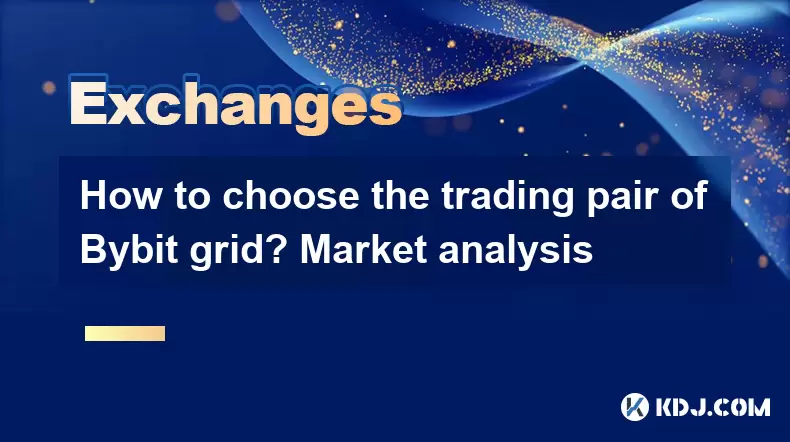
Choosing the right trading pair for grid trading on Bybit can significantly impact your trading success. Grid trading is a strategy that involves setting up a grid of buy and sell orders at set intervals within a specific price range. To maximize the effectiveness of this strategy, it is crucial to select a trading pair that aligns with your market analysis and trading goals. Let's delve into how to choose the right trading pair and conduct a thorough market analysis.
Understanding Grid Trading on Bybit
Before selecting a trading pair, it's essential to understand how grid trading works on Bybit. Grid trading automates the process of buying low and selling high within a predefined price range. You set up a grid of orders, and the system automatically executes trades as the price moves within the grid.
- Choose the trading pair: Select the cryptocurrency pair you want to trade.
- Set the price range: Define the upper and lower boundaries of your grid.
- Determine the number of grids: Decide how many buy and sell orders you want within the price range.
- Set the investment amount: Allocate the funds you want to use for grid trading.
Understanding these basics will help you make informed decisions when choosing a trading pair.
Factors to Consider When Choosing a Trading Pair
Selecting the right trading pair involves considering several factors that can affect the performance of your grid trading strategy. Here are some key aspects to consider:
Liquidity
Liquidity is crucial for grid trading because it ensures that your orders are executed promptly and at the desired prices. High liquidity means there are enough buyers and sellers in the market, reducing the risk of slippage.
- Check trading volume: Look at the trading volume of the pair over the past few days or weeks.
- Monitor the order book: A deep order book with tight bid-ask spreads indicates high liquidity.
Volatility
Volatility can be a double-edged sword in grid trading. While it can increase potential profits, it also raises the risk of significant price movements that could exceed your grid's boundaries.
- Analyze historical volatility: Use tools like Bollinger Bands or Average True Range (ATR) to assess the pair's volatility.
- Consider your risk tolerance: If you are risk-averse, choose a pair with lower volatility.
Trading Fees
Trading fees can eat into your profits, so it's important to consider the fee structure of the trading pair you choose.
- Compare fees: Bybit offers different fee structures for different trading pairs. Compare these to find the most cost-effective option.
- Consider maker and taker fees: Grid trading often involves acting as a maker, so look for pairs with lower maker fees.
Market Trends
Market trends can influence the effectiveness of your grid trading strategy. A pair that is trending strongly in one direction may not be suitable for grid trading.
- Use technical analysis: Look at moving averages, trend lines, and other indicators to identify the current trend.
- Consider the broader market context: Understand how macroeconomic factors and news events might impact the pair's price.
Conducting Market Analysis for Bybit Grid Trading
To choose the right trading pair, you need to conduct a thorough market analysis. This involves looking at both technical and fundamental factors that can affect the price of the pair.
Technical Analysis
Technical analysis involves studying price charts and using indicators to predict future price movements. Here are some steps to conduct technical analysis for Bybit grid trading:
- Identify support and resistance levels: These levels can help you set the upper and lower boundaries of your grid.
- Use indicators: Moving averages, RSI, and MACD can provide insights into potential price movements.
- Analyze chart patterns: Patterns like head and shoulders or double tops/bottoms can indicate potential trend reversals.
Fundamental Analysis
Fundamental analysis involves looking at the underlying factors that can affect the price of a cryptocurrency. This can include news events, technological developments, and regulatory changes.
- Stay updated with news: Follow reputable sources to stay informed about events that could impact your chosen trading pair.
- Assess project fundamentals: Look at the team, technology, and adoption rate of the cryptocurrencies in the pair.
- Consider market sentiment: Use tools like social media sentiment analysis to gauge the overall mood of the market.
Evaluating Potential Trading Pairs
Once you have conducted your market analysis, you need to evaluate potential trading pairs to see which one best fits your grid trading strategy. Here are some steps to help you make this decision:
- Compare liquidity and volatility: Use the data from your market analysis to compare different pairs.
- Assess fee structures: Look at the fees associated with each pair to ensure they are within your budget.
- Evaluate market trends: Choose a pair that aligns with the current market trend and your trading goals.
Setting Up Your Grid on Bybit
After selecting the right trading pair, you need to set up your grid on Bybit. Here's how to do it:
- Log into your Bybit account: Ensure you have sufficient funds in your account.
- Navigate to the grid trading section: Find the grid trading tool in the Bybit platform.
- Select your trading pair: Choose the pair you decided on after your market analysis.
- Set the price range: Input the upper and lower boundaries based on your analysis of support and resistance levels.
- Determine the number of grids: Decide how many buy and sell orders you want within the price range.
- Set the investment amount: Allocate the funds you want to use for grid trading.
- Review and confirm: Double-check all settings before confirming the grid setup.
Monitoring and Adjusting Your Grid
Once your grid is set up, it's important to monitor its performance and make adjustments as needed. Here are some tips for monitoring and adjusting your grid:
- Regularly check the grid's performance: Look at the profits and losses generated by your grid.
- Adjust the price range: If the market moves significantly, you may need to adjust the upper and lower boundaries of your grid.
- Reevaluate the trading pair: If the pair's liquidity or volatility changes, consider switching to a different pair.
- Stay informed: Keep up with market news and events that could impact your trading pair.
Frequently Asked Questions
Q: Can I use grid trading for all trading pairs on Bybit?
A: While Bybit offers grid trading for many pairs, not all pairs may be suitable. It's important to choose pairs with sufficient liquidity and volatility that align with your trading strategy.
Q: How often should I adjust my grid?
A: The frequency of adjustments depends on market conditions and the performance of your grid. Some traders adjust their grids daily, while others may do so weekly or monthly. It's important to monitor your grid regularly and make adjustments as needed.
Q: What should I do if my grid is not performing well?
A: If your grid is not performing well, consider the following steps: review your market analysis, adjust the price range, change the number of grids, or switch to a different trading pair. It's also important to assess whether grid trading is the right strategy for the current market conditions.
Q: Can I use grid trading in combination with other trading strategies?
A: Yes, many traders use grid trading in combination with other strategies like trend following or scalping. This can help diversify your trading approach and potentially increase your profits. However, it's important to ensure that the different strategies do not conflict with each other.
Disclaimer:info@kdj.com
The information provided is not trading advice. kdj.com does not assume any responsibility for any investments made based on the information provided in this article. Cryptocurrencies are highly volatile and it is highly recommended that you invest with caution after thorough research!
If you believe that the content used on this website infringes your copyright, please contact us immediately (info@kdj.com) and we will delete it promptly.
- Kitten Craze Online: Hunting for the Purr-fect Coin Purse
- 2025-06-29 10:30:12
- Pudgy Penguins Soar to 3-Month High Amidst PENGU ETF Buzz!
- 2025-06-29 10:30:12
- AI Agents, Token Role, and Capitalization: Navigating the Web3 Frontier
- 2025-06-29 10:50:11
- Avalanche Price Forecast: Grayscale Boost Signals Potential Rally to $50?
- 2025-06-29 10:50:11
- Khazan's Getting a Facelift: Balance Changes and Freebies Galore!
- 2025-06-29 11:10:12
- Wall Street's Crypto Rival Battle: Saylor vs. Chanos and the Meme Coin Mania
- 2025-06-29 11:10:12
Related knowledge
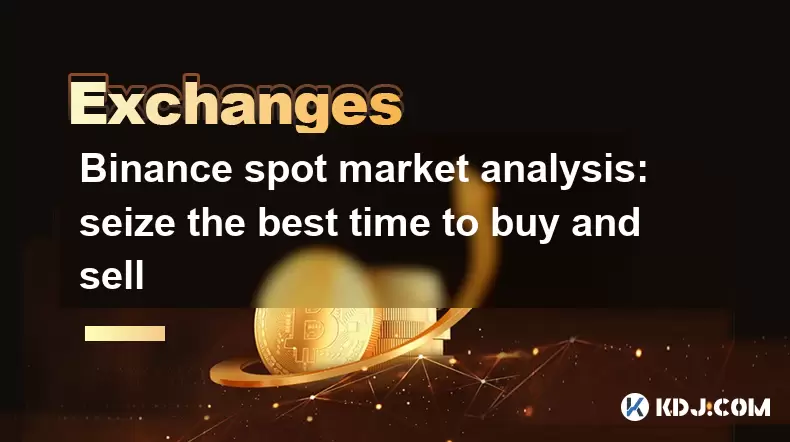
Binance spot market analysis: seize the best time to buy and sell
Jun 19,2025 at 04:56pm
Understanding the Binance Spot MarketThe Binance spot market is one of the most popular platforms for cryptocurrency trading globally. It allows users to trade digital assets at current market prices, making it essential for traders aiming to buy low and sell high. Unlike futures or margin trading, spot trading involves direct ownership of the asset aft...
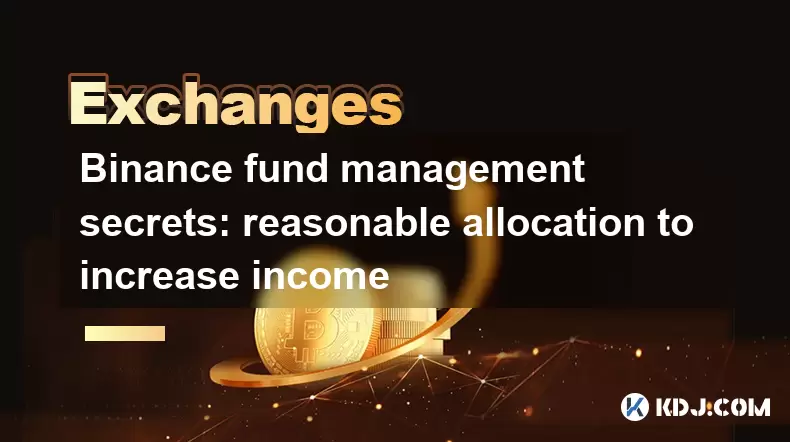
Binance fund management secrets: reasonable allocation to increase income
Jun 22,2025 at 02:29pm
Understanding Binance Fund ManagementBinance fund management involves strategic allocation of your cryptocurrency assets to optimize returns while managing risk. The key to successful fund management lies in understanding how different investment options on the Binance platform can be utilized to create a diversified portfolio. This includes spot tradin...
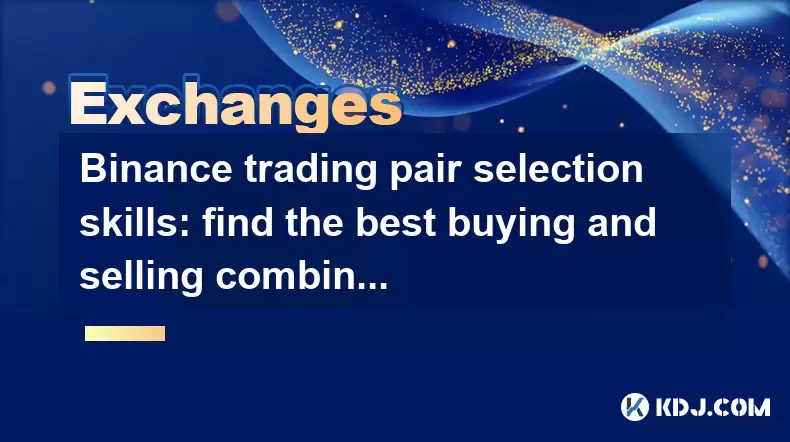
Binance trading pair selection skills: find the best buying and selling combination
Jun 23,2025 at 02:49am
Understanding the Basics of Trading Pairs on BinanceBefore diving into trading pair selection skills, it's essential to understand what a trading pair is. On Binance, a trading pair refers to two cryptocurrencies that can be traded against each other. For example, BTC/USDT means Bitcoin is being traded against Tether. Each trading pair has its own liqui...

Binance new coin mining strategy: participate in Launchpool to earn income
Jun 23,2025 at 11:56am
What is Binance Launchpool and how does it work?Binance Launchpool is a feature introduced by the world’s largest cryptocurrency exchange, Binance, to allow users to earn new tokens through staking. This platform enables users to stake their existing cryptocurrencies (such as BNB, BUSD, or other supported assets) in exchange for newly launched tokens. T...
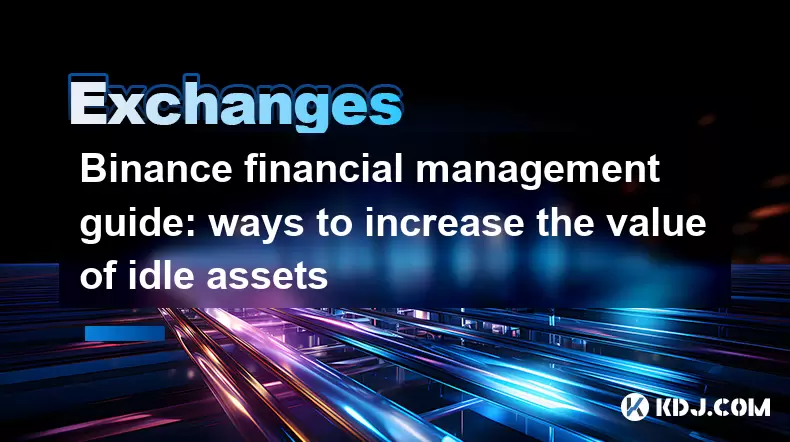
Binance financial management guide: ways to increase the value of idle assets
Jun 19,2025 at 11:22pm
Understanding Idle Assets in the Cryptocurrency SpaceIn the fast-paced world of cryptocurrency, idle assets refer to digital currencies that are not actively being used for trading, staking, or yield farming. Holding these funds in a wallet without utilizing them means missing out on potential growth opportunities. Binance, as one of the leading platfor...
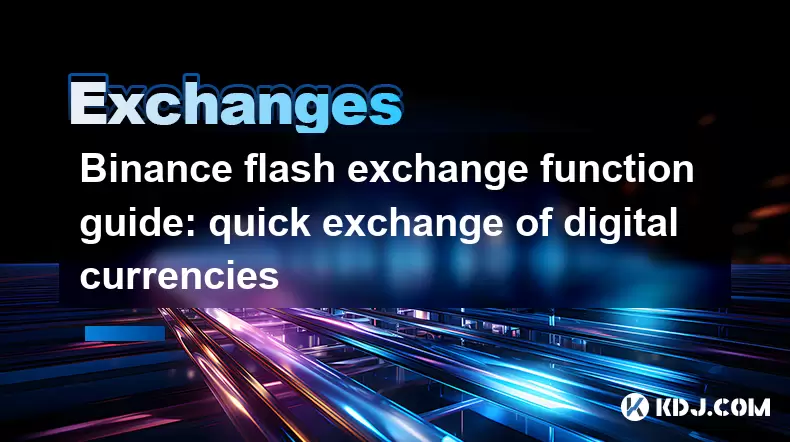
Binance flash exchange function guide: quick exchange of digital currencies
Jun 23,2025 at 12:29pm
What is the Binance Flash Exchange Function?The Binance Flash Exchange function is a powerful tool designed to allow users to instantly swap between supported cryptocurrencies without the need for placing traditional buy/sell orders. This feature simplifies the trading process by offering a direct exchange mechanism, eliminating the requirement to conve...

Binance spot market analysis: seize the best time to buy and sell
Jun 19,2025 at 04:56pm
Understanding the Binance Spot MarketThe Binance spot market is one of the most popular platforms for cryptocurrency trading globally. It allows users to trade digital assets at current market prices, making it essential for traders aiming to buy low and sell high. Unlike futures or margin trading, spot trading involves direct ownership of the asset aft...

Binance fund management secrets: reasonable allocation to increase income
Jun 22,2025 at 02:29pm
Understanding Binance Fund ManagementBinance fund management involves strategic allocation of your cryptocurrency assets to optimize returns while managing risk. The key to successful fund management lies in understanding how different investment options on the Binance platform can be utilized to create a diversified portfolio. This includes spot tradin...

Binance trading pair selection skills: find the best buying and selling combination
Jun 23,2025 at 02:49am
Understanding the Basics of Trading Pairs on BinanceBefore diving into trading pair selection skills, it's essential to understand what a trading pair is. On Binance, a trading pair refers to two cryptocurrencies that can be traded against each other. For example, BTC/USDT means Bitcoin is being traded against Tether. Each trading pair has its own liqui...

Binance new coin mining strategy: participate in Launchpool to earn income
Jun 23,2025 at 11:56am
What is Binance Launchpool and how does it work?Binance Launchpool is a feature introduced by the world’s largest cryptocurrency exchange, Binance, to allow users to earn new tokens through staking. This platform enables users to stake their existing cryptocurrencies (such as BNB, BUSD, or other supported assets) in exchange for newly launched tokens. T...

Binance financial management guide: ways to increase the value of idle assets
Jun 19,2025 at 11:22pm
Understanding Idle Assets in the Cryptocurrency SpaceIn the fast-paced world of cryptocurrency, idle assets refer to digital currencies that are not actively being used for trading, staking, or yield farming. Holding these funds in a wallet without utilizing them means missing out on potential growth opportunities. Binance, as one of the leading platfor...

Binance flash exchange function guide: quick exchange of digital currencies
Jun 23,2025 at 12:29pm
What is the Binance Flash Exchange Function?The Binance Flash Exchange function is a powerful tool designed to allow users to instantly swap between supported cryptocurrencies without the need for placing traditional buy/sell orders. This feature simplifies the trading process by offering a direct exchange mechanism, eliminating the requirement to conve...
See all articles

























































































